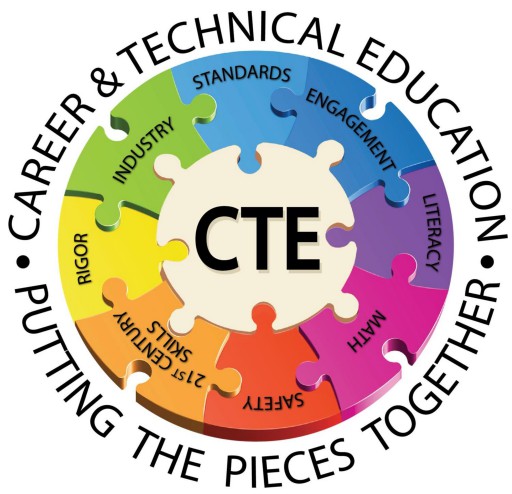Teachers today advise pupils to look more widely for vocations that pique their interest, but employers are having difficulty finding qualified candidates for available positions. This implies that all vocations, including those from career and technical education (CTE) programs, are receiving a lot more attention.
However, CTE programs frequently receive insufficient attention for a variety of reasons, such as a lack of money or preconceived notions about the occupations they lead to. According to Richard Lapan, an author of Strength-based profession Development and a professor at the University of Massachusetts, students ought to think more frequently about the roughly 16 profession clusters and 79 routes that the Association for Career and Technical Education (ACTE) has established.
According to Lapan, “I think that early on, students rule out a wide range of good choices for some not so good reasons.” “It seems to me that important choices, such as choosing to pursue a career in technology, are not well considered.”
The public relations and advocacy manager for ACTE, Jarrod Nagurka, states that CTE is “especially important as the world of work constantly changes.”The CTE ecosystem is in a unique position to swiftly and effectively reskill, upskill, and skill workers, and it can adapt to the shifting demands of the job market on skills.
Career and Technical Education: What Is It?
Early on in its existence, CTE primarily focused on teaching women skills to assist them manage their families by providing classes on childcare, cooking, and other homemaking-related subjects. The field of education for homemakers gave rise to CTE.
Eventually, it started to offer what became known as “trade skills” in addition to other educational options for students who were more likely to enter the workforce after high school than continue their education in college. But these days, it covers advanced career routes in science, technology, business, and other areas, and many of its graduates go on to four-year universities.
CTE programs typically have linkages to employers, which means that in addition to giving students practical skills that make them “job-ready,” the course work is directly tied to jobs, and students have opportunity for real-world experiences and employment, according to Nagurka.

Which Careers Are Prepared for by CTE for Students?
These 16 career clusters are defined by ACTE, which also delineates 79 career pathways within them. Nancy Trivette, the former vice president of the ACTE Agricultural Division and head of agricultural education for New Jersey, observes that there are many other career path alternatives available within those clusters.
Students are given the choice to focus more narrowly after receiving some basic, general information about the cluster early on in all of these, according to the speaker.
For example, she explains that there are five paths within the agriculture, food, and natural resources cluster: the systems related to agribusiness, animals, food items and processing, natural resources, and plants.
She goes on to say that jobs in agriculture can involve working with plants through botany, studying animal health, processing food for the market, and analyzing how environmental issues affect the agricultural system. Furthermore, she notes that although some people believe that high school is the end point for CTE training, many program participants continue on to community college or a four-year degree.
As another example, the hospitality and tourist cluster include travel and tourism, lodging, leisure, restaurants and food/beverage services, and amusements and attractions. There are pathways in marketing communications, marketing management, marketing research, merchandising, and sales within the marketing cluster.
Additionally, employability abilities, or “soft skills,” which companies want and believe are essential to success in the workplace, are imparted through CTE programs, according to Nagurka.

How are courses taught in technical and career education programs?
When referring to career and technical education, experts at ACTE and other relevant organizations frequently use the term “skill-based education,” which, in Nagurka’s opinion, typically implies that the students engage in practical labor. Longer-term tasks pertaining to potential occupations may be assigned to students, and they may be asked to consciously apply 21st-century abilities including critical thinking, problem-solving techniques, communication, and resilience.
Because students may need to access other materials online while they explore the tight paths inside the clusters, blended learning—which combines classroom instruction, online learning, and hands-on experiences—is frequently beneficial. They can also simulate experience with practical work in the trades or in the healthcare profession thanks to virtual learning platforms. They frequently receive training through virtual or real-world experience, which is augmented by classroom instruction.
While some initial work or training that doesn’t require specialized equipment is available in ordinary classrooms, some CTE is taught at special schools. These days, more CTE introductory courses are available to all students, frequently beginning in middle school.
For example, the regional Tulsa Technology Center provides its students with direct, hands-on exposure with CTE content. It also arranges frequent visits for students from other schools to learn more about CTE jobs and provides some virtual training. Additionally, it funds a manufacturing trailer that is staffed by program participants and teachers to give younger children hands-on learning opportunities at other schools.
In Tennessee, middle school students follow a path that includes courses in career-technical education (CTE). In the sixth grade, they study how technology can be applied to real-world manufacturing processes or to create health care data. In the seventh and eighth grades, they work on practical projects related to various CTE fields. After having an opportunity to investigate them early, kids can receive even more specialized training when they transfer to high school.
Students participate in “job shadow” days at Wynne (AK) Junior High School, where they tour banks, farms, lumber yards, pharmacies, medical offices, and police headquarters. Denver Public Schools mandate that teachers introduce middle school students to many CTE vocations every quarter.
Comment